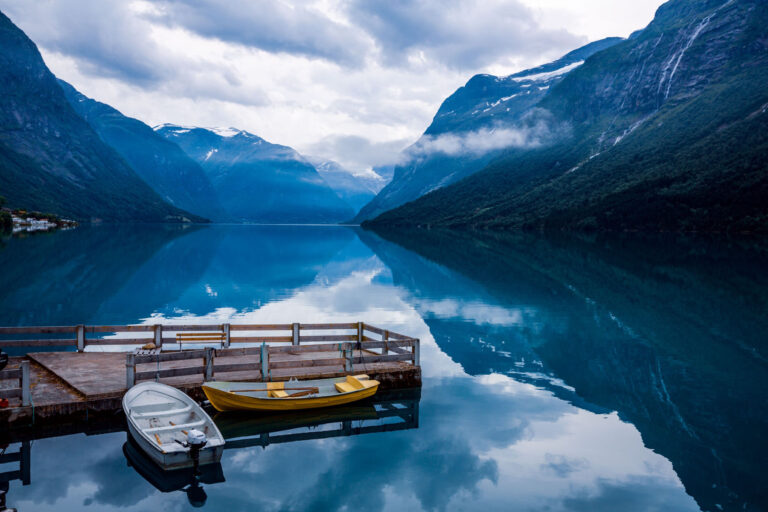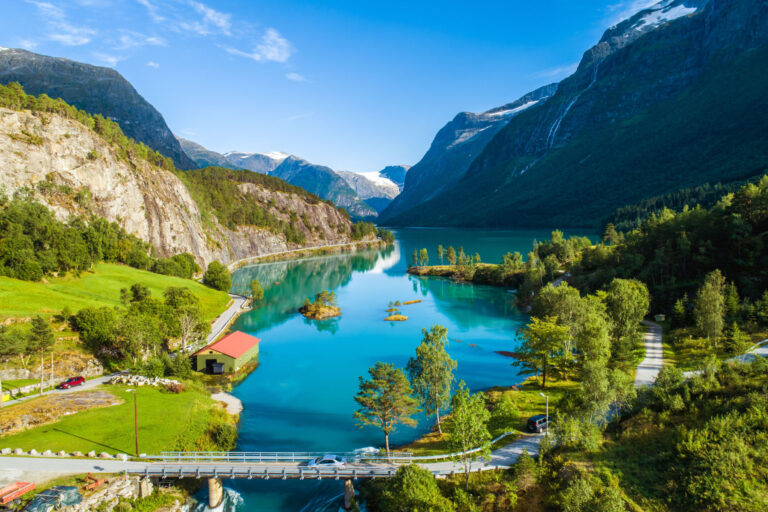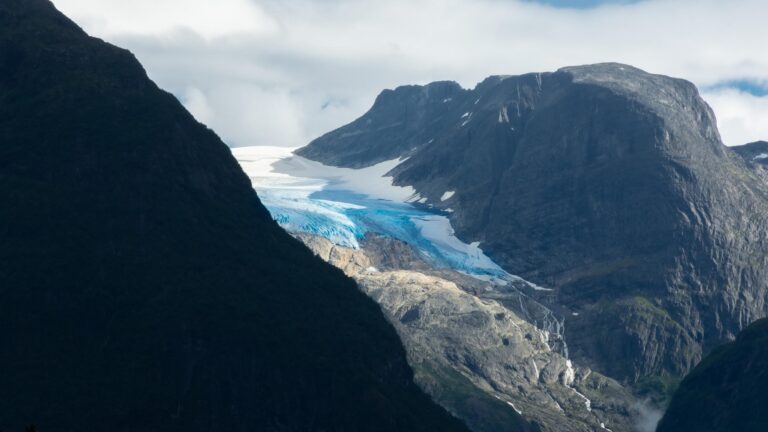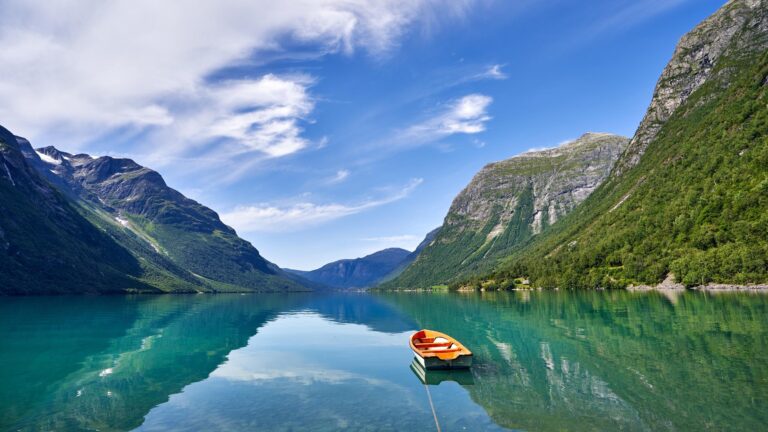This tourist hotspot is one of the most stunning places in Norway, but it hides a tragic secret. Here is the story of the Lovatnet tragedy, and the risk of it happening again.
The Norwegian fjrods are known worldwide for their stunning natural beauty. Long before mass tourism, the mystery of the fjords attracted European royals from far and wide.

Today, the natural beauty of the Norwegian fjords is no secret. Fuelled by fantastic photography shared on social media, fjord Norway is swamped by international visitors every summer.
One of those places to have enjoyed a boost in popularity is Lovatnet lake near Loen on the Nordfjord. Its proximity to the Olden cruise port and the Loen Skylift means more people than ever before are visiting the lake.
One glance at the photos from Lovatnet (also known as Loenvatnet) and you’ll soon see why the glacial lake has become so popular. It is simply stunning.
Where is Lovatnet?
First things first, let's put the lake on a map!
Behind the good looks
But there is a danger at Lovatnet that's hidden in plain sight. Those same steep mountains that lend the lake its dramatic landscape are also responsible for tragedy.
If you know where to look, you’ll see a few scars in the rock on the mountainside. They are the most obvious hint as to what happened here several times over the last 100 years.

At the beginning of the 20th century, two small farming settlements Bødal and Nesdal were flourishing. There were good farming conditions and tourism numbers were on the up. But then, it all changed.
The Lovatnet rockslides
Between 1900 and 1950, several rockslides from the mountain Ramnefjellet plunged into the calm water at the southern end of the lake creating deadly tsunami waves.
There had been warning signs. The number of rockfalls from the 1,493-metre-high Ramnefjellet were increasing. But few had expected what would happen next.
In 1936, a total of 74 people lost their lives. What made the disaster even harder to swallow was that it came just 31 years after a similar incident. What worries locals is that geologists are almost sure it is going to happen again one day.

The 1905 tragedy at Lovatnet
In 1905, a rockslide of 350,000 cubic metres fell into the lake from a height of approximately 500 metres.
The resulting waves, which reached a height of over 40 metres, killed half the population of two lakeside villages. In total, 61 people died and 60 houses were destroyed along with many boats and boathouses. The final wave tossed the tourist boat ‘Lodalen’ 300 metres inland.
Unfortunately, geologists that studied the 1905 incident decided the likelihood of a repeat was small. This meant that farms and villages were rebuilt by the lake, albeit a little higher up. It was an error of judgement that would prove very costly indeed.
The 1936 tragedy at Lovatnet
After years of no activity on the mountain, the 1930s saw fractures develop and a number of minor rockslides occur. Still, with the settlements having been rebuilt higher up, people didn’t feel at risk despite the regular rockfalls.
In 1936, more than one million cubic metres of rock fell from a height of more than 800 metres into the lake. The impact of this rock on the lake created three tsunami waves, which reached land with virtually no warning.
The damage caused was immense. As the waves crashed onto land, they destroyed 16 farms and many other buildings including a power station, sawmill and workshop. In total, 74 people lost their lives, with many more facing ruin.
Lovatnet today
Surprisingly, there a few farmers living on the shores of Lovatnet today. However, due to the risks posed by the mountains, land use and development is strictly controlled.
The scars in the landscape are clearly visible and have been the subject of several scientific studies.
Sophisticated monitoring equipment and evacuation plans are now in place. That meant that adequate warning if—or rather when—a repeat incident occurs should be possible.
Is it safe to visit Lovatnet?
Located at the inner end of the Nordfjord close to two glaciers and the recently-opened Loen Skylift, Lovatnet has much to attract the curious tourist. But is it safe to visit the area?

Given the advanced monitoring and warning systems now in place, I would suggest that Lovatnet is a relatively safe place to visit. There are many other parts of Norway with a similar risk profile, especially in the fjord region.
The risk can broadly be compared to visiting an earthquake-prone city such as San Francisco. We know a major earthquake is going to occur at some point, but that doesn't stop tourists flocking to the city year-round.
For the curious, the Norwegian Directorate for Civil Protection publishes and regularly updates an Analyses of Crisis Scenarios document. This is a comprehensive threat and risk assessment document that looks at scenario planning for very specific scenarios ‘likely’ to happen in Norway.
This includes the risk of a rockslide triggering a tsunami wave. According to the research, the likelihood of such an incident in one of the 26 areas identified in the report over the coming 100 years is estimated at 40%.
Have you visited Lovatnet? Let us know your thoughts and experiences on the area in the comments.

